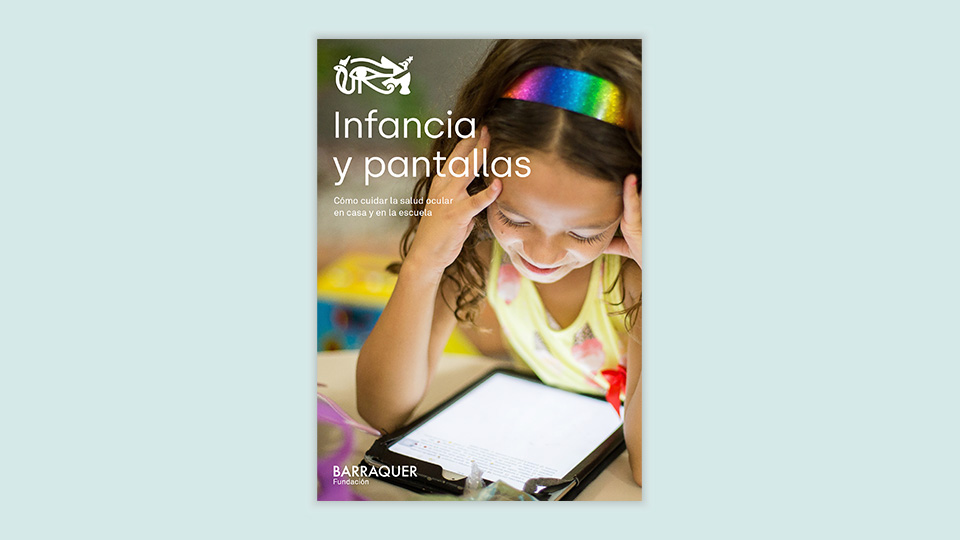New day of eye check-ups at the Casal dels Infants in Santa Coloma
09/04/2025

31/08/2020
Under the motto Visual health is future quality of life, the Barraquer Foundation has published a guide entitled Children and screens. How to look after the eyes at home and in school, to help parents and teachers to promote eye health protection habits among children.
Currently, one in 4 children suffer visual impairments and it is estimated that this figure will increase in the coming years as a consequence of the abuse of their near sight caused by a high level of exposure to screens from a very young age. In addition to children's undeniable attraction to electronic devices, the recent months in lockdown and the introduction of new technologies in the teaching setting have led to an increase in the use of mobiles, tablets and computers, which translates to an increase in eye conditions and great worry among specialists due to the lack of scientific studies determining the real effect on the eye sight.
The danger of screen overuse
When we read on a screen, we use our near vision and our intermediate vision equally, which means continuous contraction of the eye musculature. If these muscles cannot rest, it will lead to overexertion and increase the risk of eye fatigue, especially in paediatric patients.
In addition, activities with devices like the computer, tablet, smartphone, television or a video game console, reduce our blinking frequency, causing temporary blurred vision and discomfort relating to dry eye. In children and adolescents, it may result in changes to the Meibomian glands, responsible for producing tears.
Using our near sight for a long time in the absence of natural light may impact eye health and even cause eye conditions that are more common in adolescence and childhood, such as refractive errors (myopia, astigmatism and hypermetropia) and strabismus, which may, in turn, end up in lazy eye. These conditions have a good prognosis if they are detected early, but putting appropriate hygiene measures in place at home and at school is also fundamental.
Commitment to children's visual health
“The overall development of children and teenagers largely depends on the correct evolution of their vision. Visual maturation begins at birth and ends at the age of 8 or 9 approximately”, states Dr. Idoia Rodríguez Maiztegui, ophthalmologist at the Barraquer Ophthalmology Centre.
“The Barraquer Foundation is committed to the eye health of our society and we want to put an emphasis on children, as in the current situation they are a vulnerable group having suffered the visual consequences of confinement”, states Francesc Ballbé, director of the Barraquer Foundation.
In response to this proposal, the Foundation has published a guide for parents entitled Children and screens. How to look after the eyes at home at in school. Written by Barraquer Centre specialists, this guide, available as a free download from www.barraquer.com, is a compilation of general recommendations for taking care of the visual habits of children at home and in school: working in natural light, taking regular breaks, not forgetting to blink, checking your body posture, using night mode or blue light filters on the tablet or computer and using glasses, if they have been prescribed. In addition, experts advise setting screen use limits for children and adolescents, which would have to be only occasional, not exceeding one hour daily for children aged 3 to 6, and 2 hours daily for those under the age of 16.
The Barraquer Centre would like to give you a special reminder of the importance of paediatric eye check-ups, even if the child does not have any symptoms, as visual development ends at the age of 8 to 9 approximately, the first 4 years being where greatest progress and neuroplasticity are seen. “For this reason, just in case there’s an eye problem, it's essential to detect it and treat it as early as possible, since past this stage it could be irreversible”, as Dr. Rodríguez Maiztegui states.
We chatted with our pediatric optometrist Susana Escalera, who sees about 30 children a day in her office. Her experience and skills are paramount to a successfult eye exam of these small patients, some of whom are still a baby. It seems like a simple task, but it is not.